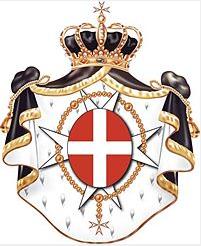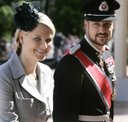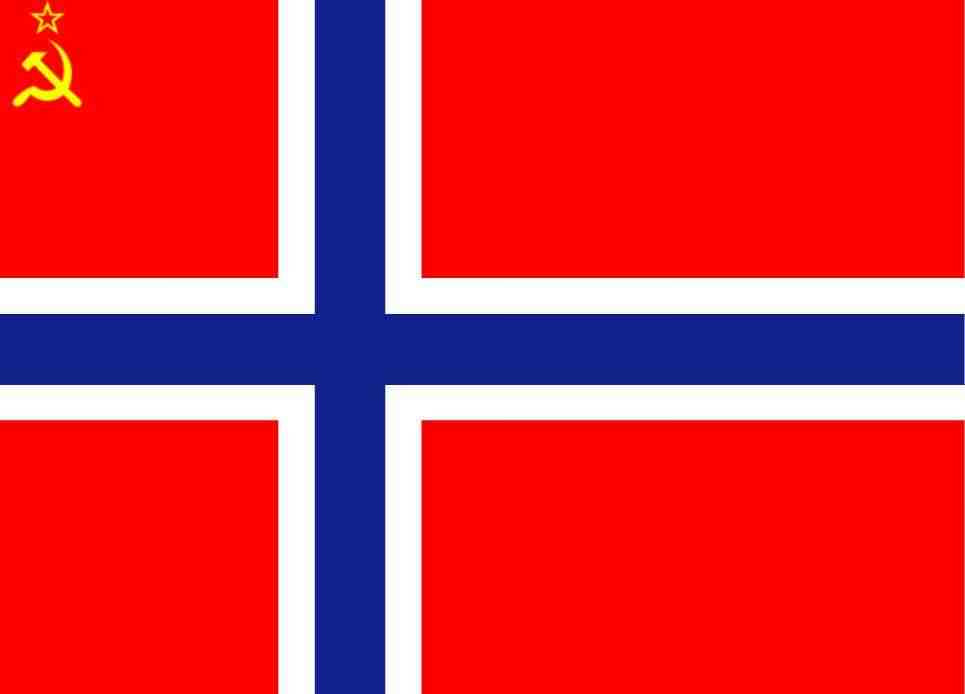http://www.google.no/search?hl=no&q=tribe%20benjamin%20norway&meta=&aq=f&oq=
PS.
Her er mer om dette:
Benjamin
A Study on the Tribes by Yair Davidiy
see also:
Answers to Queries about BENJAMIN
Tribal Identification: Benjamin 1
"And the sons of Benjamin were Belah, and Becher, and Ashbel, Gera, and Naaman, Ehi, and Rosh, Muppim, and Huppim, and Ard" Genesis 46; 21.
The Tribes of Judah and BENJAMIN together were to compose the main stock of the modern Jewish people. BENJAMIN was also represented amongst the BELGAE and the NORMANS.
THE NORMANS
The Normans had the same country of origin in north Germany as the Saxons according to Julian14. They were called Transalbingi or Nordalbingi15 (i.e. "North-of-the-Elbe") like the Saxons had also been termed. These Norman-"Nordalbingi" were connected to the remnant of Angles and Saxons who were left behind when their compatriots invaded England or who for some reason returned from the invasion. The Normans moved into Scandinavia and dwelt in parts of Denmark and Norway before moving onwards. There were some Swedes16 amongst the Normans though Norwegian sagas and English tradition17 suggest that most of them came from Norway. Genealogies of Norman-descended nobles in England often trace them to early Norwegian kings and heroes. Place-names in Normandy (France) suggest links with Norway. Modern consensus18, however, seems to be that the Normans came mainly from Denmark. Wherever they came from, they had their own peculiarities and quickly developed their own national character and culture. They even may have had their own particular physical features being often presumed as appearing somewhat darker than the usual Scandinavian, tending even to dusky, and also as being tall and lanky though these impressions may be exaggerated. The point is, in the same way as other groups had earlier emerged from the midst of the Scandinavians as distinct recognizable entities, so the Normans may always have been a distinct people a hard core of which had maintained their own identity.
The Normans really became recognizable to the historian when in 860 a band of Vikings led By Rollo received the area afterwards called Normandy from the King of France. Those Vikings who settled in Normandy together with those local inhabitants who intermarried with them and/or identified with them became known as the Normans. Dudo19 (ca 960), himself a Norman, said that the Normans came from Danes descendants of the ancient (Greek) Danae and had reached the north via the Balkans and that their forefathers were the Dacae. There are Danish traditions that trace their ancestry back to Israel.
Within one or two generations of their first settlement the Normans were no longer recognizable as Scandinavian. They had changed their language20, religion, and culture. They intermixed with the peoples of Brittany in France. These were Celts and Alans. The Alans had come from the Caucasus area at the time of Attilla the Hun and settled in Brittany. Their use of armored cavalry. These were Celts and tactics were to influence the Normans. Those Alans who remained in the east were to confederate with the Khazars and to be identified with them. The Celts of Brittany (amongst whom first the Alans then the Normans settled) were to a degree descended from Celtic peoples of Britain and after conquering England the Normans would adopt the Celtic Arthurian legends as part of their own heritage21. In 1066 the Normans conquered England. Their total forces included many others who came over from France with them, and these comprised maybe a third or more of their total forces. The "Normans" eventually contributed about ten percent of England's total population22 and it has been estimated that approximately twenty percent of the English population has some degree of Norman blood in them. In the course of time Normans also settled in Scotland, Wales, and Ireland. There was also an element of Edomites amongst the Normans. In ancient times Essus (i.e. Esau) had been considered an ancestor and worshipped by some of the Celtic people within whose area the Normans settled and with whom they intermixed. Most of these Celtic peoples were however probably of Israelite origin.
The English upper classes contain a significant number of Norman descendants. After about 1700 a large proportion (it is claimed) of the higher ranked aristocratic English families intermarried with Jews23 at some stage or other. [-This group has however proved itself of being on occasion as anti-Semitic as anybody else. Apart from revealing a non-fraternal instinct anti-Semitism: is a disqualifying factor for other reasons. It is usually concomitant with selfishness and non-Israelite characteristics]. The modern Jews descend from the two tribes of Benjamin and Judah, on the whole. Amongst the Normans were many descendants of Benjamin and possibly also of Judah. We thus a tendency for Benjamin to reconnect to Judah. The basic Norman stock may have come from Benjamin in addition to which the area of Normandy in France settled by them had previously belonged to the NAMNETES who derived their name from Naaman, a son of Benjamin. Since the "-etes" Namnetes is a suffix the names are in effect identical. There were also Benjaminites in part of Norway though most of Israelite Norway is descended from Naphtali and other tribes.
Benjamin, Judah, Levi, Simeon, and small numbers of most of the other tribes had remained together as Jews in the southern realm of Judah when the Assyrians exiled most of the Israelites in the Northern Kingdom of Israel. At the same time large numbers from the southern kingdom were also to be taken into exile by the Assyrians and in other ways were to be counted as part of the Lost Tribes of Israel. Amongst this last group was part of the Tribe of Benjamin which apparently became the basic stock of the so-called Norman nation. Jewish Medieval tradition said that the Tribe of Benjamin (or a small part of it) had gone into exile to the Balkan region of Rumania24, or to the land of Germany25, or to both. From the Balkans (Rumania) emerged the Dacae who were considered a branch of Sacae-Scythians. The Dacae were together with the Getae. From the Dacae came the Normans who were believed to have reached Scandinavia via Germany. The Dacae according to Lempriere were a western branch of the Sakae. . The Norman symbol is said to have been a wolf and so too was the wolf a symbol of the Dacae26 amongst the Getae. Likewise a wolf was the symbol of Benjamin27. William the Conqueror bore a wolf on his standard. Godfroi de Bouillon (ca.1099), Crusader King of Jerusalem, claimed descent from Benjamin28. Old accounts say that the Franks had come from the former Saxon area of Maurunganie in North Germany below the place of the Normans. The first ruling house of the Franks were the Merovingians and recently it has been claimed that the Merovingian Franks were also descended from Benjamin .
Athol Bloomer: however says, "The Merovingians are most likely from the Tribe of Dan. Their tradition of long hair and the name Samson among the Royal House would indicate descent from Samson and thus the Tribe of Dan". Another claim (H. Hoeh) is that they derived from a non-Davidic branch of Judah.
Rabbi Ginsburgh on the tribe of Benjamin, the recitified *wolf*.
Kabbalah and Medicine
The Healing of Body and Soul
Part 33
The Rectified Wolf
The good "wolf" of the Torah is personified by the tribe of Benjamin. In his blessings of his sons before his death, Jacob blessed his youngest son Benjamin: "Benjamin is a preying wolf...." Here, Jacob prophetically alluded to the episode recorded at the end of the book of Judges, "the concubine of Givah." At first, the tribe of Benjamin sinned sexually, but at the end, after most of the tribe had been wiped out by their brothers, in vengeance of the sin, the remainder were allowed to snatch, as a wolf, a wife from amongst the dancing maidens. The very evil inclination of the wolf was here elevated and rectified; the fear of rape was overcome and sweetened in its source. The tribe of Benjamin, from whom the first king of Israel, Saul--who "snatched the kingdom," as a wolf--was to stand, was thus reestablished. Our sages teach us that the wolf of Benjamin symbolizes the altar in the Holy Temple (the altar was in the territory of Benjamin), upon which the animal sacrifices were offered. The altar "preyed" upon the sacrifices just as a wolf preys upon its prey. The word for "altar" in Hebrew is mizbeiach, whose root, zevach, is the same as the name of the king of Midian served by Ze'ev, the wolf, as mentioned above. In the altar, the wolf-image as well as the inclination "to slaughter" find their ultimate rectification. The full blessing of Jacob to Benjamin reads:
Benjamin is a preying wolf:
In the morning he shall eat booty,
and in the evening he shall divide the spoils.
Rashi, quoting the sages, interprets "in the morning he shall eat booty" to refer to the "morning" or "rise" of the Jewish kingdom, the kingdom of Saul. "And in the evening he shall divide the spoils" is interpreted to refer to the story of Mordechai and Esther--from the tribe of Benjamin--who divided the spoils of Haman at the "evening" or "descent" of the Biblical epic of Jewish monarchy. The blessing of Benjamin clearly links the image of the wolf with the turning points of the daily cycle--morning and evening. Above, we saw that the "companion" of the wolf, ze'ev, is the raven, orev. The Hebrew root of the name orev means "evening," as in the phrase, repeated as the conclusion of each of the six days of creation: "and there was evening, and there was morning..."--the original phrase in the Torah in which evening and morning are juxtaposed. The raven is called orev for it is as black as the evening. In the Scriptures, we find the idiom "evening wolves," a clear allusion to the relationship of the wolf to the raven:
His horses are faster than leopards, and more sharp-toothed than evening wolves....
In a second verse, we find the juxtaposition of the evening wolves to the morning:
...its judges [devour it] like evening wolves, that do not leave any bones till the morning.
Furthermore, the word orev is cognate to the word for "plane" or
"wasteland." Here, too, we find the idiomatic juxtaposition of the wolf with the orev:
Therefore the lion of the forest will strike them, and the wolf of the plains will despoil them.
As portraying a rapist, the wolf strikes at eve (this is not just an English pun of Eve on eve, but the relationship of "knowing [a euphemism for sexual relations] Eve" and the time of evening or night is actually alluded to in Psalms: "and night unto night expresses [yechaveh, cognate to Chavah, 'Eve'] knowledge"!) or at dawn (when he can first identify his prey). The location of his assault is the "wasteland." In the words of the Torah:
For in the field he found her, the betrothed maiden cried out,but there was no one to rescue her.
In the preceding verse, the Torah likens rape to murder, implying that the fear of rape, the fear of the wolf, entails the fear of the lion as well:
For as a man rises up against his neighbor
and murders him, So is this thing.
In contrast, the prophet envisions the peace on earth of the messianic age as a time when "the wolf will live with the lamb." (This is indeed the first image in a line of imagery which concludes with "...and the lion will eat straw like the cow. A suckling will play at the hole of the snake and a child will place his hand over the lair of the serpent"--following the order of wolf, lion, and snake.) The Jewish people is likened by our sages to a lamb surrounded by seventy wolves, the gentile nations of the earth, whose desire it is to rape and devour us. With the coming of Mashiach, true and lasting peace will be established between Israel and the nations. At a later stage in the messianic era, the natural order itself will metamorphose to a world where the physical wolf and lamb will lie down together and live in peace.In the Jewish people itself, the "lamb," Benjamin--symbolized as the "preying wolf"--is thus the "wolf within the lamb." In Kabbalah, he represents the fertile feminine womb of the collective soul of Israel (in the terminology of Kabbalah, the yesod of malchut), the spiritual power of the Jewish people to achieve peace between wolf (in particular, "the lamb within the wolf," as personified by the righteous gentile) and lamb (in particular, "the wolf within the lamb," as personified by Benjamin, the "preying wolf").From the messianic era we enter the world to come, "a day that is entirely Sabbath and the rest of eternal life." The ultimate rectified image of the world is the secret of the Sabbath. Our sages teach us that just as the wolf preys "in front of it and behind it," so does the Sabbath "prey" and elevate all the holy sparks of the week, subsequently drawing Divine blessing into all of creation--"in front of it and behind it."In the Ten Commandments, the fourth commandment, to keep Shabbat, begins:
Remember the Sabbath day , to keep it holy.
In the parallel appearance of the Ten Commandments, it begins:
Guard the Sabbath day, to keep it holy.
Our sages say that "Remember..." and "Guard..." (which were pronounced by God in the giving of the Ten Commandments simultaneously) refer to the Divine influence of Shabbat on all of realityâ?""in front of it and behind it." In Kabbalah, we are taught that "Remember..." refers to the male dimension of Shabbat while "Guard..." refers to the female dimension of Shabbat. The male dimension is the secret of "in front of it" while the female dimension is the secret of "behind it." Shabbat is the time of union of male and female, the consummately rectified state of the wolf, the wolf of the world to come.
http://www.britam.org/benjamin.html
PS 2.
Enda mer om dette:
2. Tribal Identifications: Benjamin in Norway?
We hold that the Normans who conquered England were from Benjamin. They may
have come mainly from Norway but our understanding is that they different
from the rest of the Norwegians.
A supporter of ours, Bjorn-Olaf Hagensen, agrees with us though he says
that in some provinces of Norway, in his opinion, Benjamin is still prominent.
On the whole we believe that Norway is dominated by Naphtali but most
researchers in this field identify Norway with Benjamin.
see the note by Richard Griffin below:
3. Richard Griffin: Beserker warriors and the tribe of Benjamin
The History Channel aired a segment on unconventional warfare methods used
throughout history. The Beserker warriors of Norway were given honorable
mention. Several Scandinavian scholars discussed their unorthodox warfare
methods that included dressing in wolves and bear skins and not in armor,
and then howling like wolves before fearlessly charging their
opponents. The English work Beserk derives from these terrifying
warriors. Of interest to those that believe the Tribe of Benjamin migrated
into Scandinavia is the reference to a particular totem-animal that would
become associated with their tribe in
49:27 Benjamin shall ravin [as] a wolf: in the morning he shall devour the
prey, and at night he shall divide the spoil.
Is it just a coincidence or have we stumbled across the wolf-tracks of the
sons of Benjamin?
http://www.nationmaster.com/encyclopedia/Berserker-(viking)
Berserkers (or Berserks) were ferocious
sworn allegiance to
god
themselves into murderous fury before a battle.
The term berserker comes from Norse "baresark", meaning "bear shirt".
However, it could also be translated as "naked shirt" (i.e., no shirt).
The origin of berserkers is unknown, although
of Germanic warriors with berserk-like fury.
It appears that berserkers were religiously-inspired warbands or warrior
societies.
berserker gangs with twelve members where new applicants had to go through
a ritualistic or real fight to be accepted. Some berserks also took names
with bj³¶rn or biorn in them in reference to a bear.
Berserker bands' fearsome reputation and the sight of raging warriors
charging headlong into battle surely had a demoralizing effect on the
opposition. However, allies were wary of them as well because berserkers
could decide to pillage a friendly village on their own and rape their women.
mentions berserkers in Egilssaga, Hrolf's Saga and Ynglingasaga. Many sagas
describe berserkers as villains who kill, loot, and plunder
indiscriminately.
have been a berserk.
Finehair, founder of kingdom of
of berserker warriors. Grettirssaga tells that those warriors were
ulfhedinn or "wolf-coats", meaning that they wore wolf skins.
Many northern kings used berserkers as part of their army of hirthmen and
sometimes equivalent to a royal bodyguard. It may be that at least some of
those warriors just adopted the organization or rituals of berserk warbands
or used the name as a deterrent or claim of their ferocity. It is doubtful
any king would have accepted a band of homicidal maniacs as his closest men.
In 1015 King Erik of
berserkers.
Christian law banned berserkers as heathens and sentenced them to outlawry.
By the 1100's organized berserker warbands had disappeared.
Berserkers are reported to have worn bearskins in battle thick fur would
have worked as leather armor. Bear worship was not unusual in northern
Germanic areas. "Possessed" by the spirit of the bear, they might have
believed they had its the strength and ferociousness and could even take
the animal's shape. In that respect, they are basis of fantasy characters
like Beorn in the
Warriors of the
warriors working for
Empire) also followed bear rituals.
Berserkers fought with crazed or drugged strength, heedless of danger. They
worked themselves up into a bloodlust berserker rage - before battles,
banging their helmets with their weapons, biting their shields, and
howling. They were said to be immune to pain (or even immune to weapons) in
battle. In their fury they would attack their enemies but also everything
else in their path, sometimes even their own people and allies.
Theories to explain berserker behavior
Proponents of the drug theory favor ergotism or the use of the fly agaric
mushroom. Drunken rage would do as well. It is also possible that
berserkers worked themselves into their frenzy through purely psychological
processes i.e., frenzied rituals and dances. According to
they also drank bear or wolf blood.
Berserk rage called berserkerganga could also happen in a middle of daily
work. It began with shivering, chattering of the teeth, and chill in the
body. The face swelled and changed its color. Next came great rage,
howling, and indiscriminate brawling. When the rage quelled, berserker was
exhausted and dull of mind possibly for several days. According to sagas,
many of their enemies exploited this stage to get rid of them.
>
U.S. professor Jesse L. Byock claims (in Scientific American, 1995) that
berserker rage could have been a symptom of Paget's Disease. Uncontrolled
skull bone growth could have caused painful pressure in the head. He
mentions the unattractive and large head of Egill Skallagrimsson in
Egilssaga. Other possibilities are mild epilepsy and hysteria.
Today the word "berserker" applies to anyone who fights with reckless
abandon and disregard to even his own life i.e., "goes berserk".
4. Brit-Am Needs:
Brit-Am needs money for several obvious reasons including:
Day to day functioning the same as any business, research body, or
charitable institute.
rent, electricity, etc.
In addition we also employ from time to time people to help us with
research, transcribe sources, translate sources,
general office work, etc. In the past I would do everything myself and
still do more than 90% of it but employing others helps
free time and energy to concentrate on areas that others cannot really work
in and that are more vital to Brit-Am.
We also need money to advertise and to publish and to remove debts
accumulated in the early stages of our
enterprise when very few recognized us. The sums concerned in this matter
and all the other points are not enormous
but they are significant and taken together with everything else they add up.
We hope to begin advertising our works both in Hebrew and English.
We should be placing more emphasis on the Hebrew-speaking sector
but need some finance in this regard.
We also want to advertise Brit-Am more in English.
With the relatively little we have received until now we have done
reasonably well on most points
and made progress as well as preparing a foundation that can be relied upon.
Brit-Am has the following unique characteristics:
a. We are in Israel, Jewish, and use Hebrew sources.
b. We have revealed Some Scriptural Insights of our own and access to
others that otherwise may not have come to light.
c. We have Research advantages in the general sphere. Through Divine
Providence and our own efforts we came up with valuable reliable
information on this subject
[Other researchers also have insights of great value and we acknowledge
their contributions. Not only that but through our
magazine, "Brit-Am Truth" we are providing a forum in which all the best
researchers will eventually come together.
We hope to put the magazine out frequently. At present we charge a
relatively high price and it still does not pay though it justifies itself
in other ways. In principle I would like, if it ever became possible, to
send the magazine out at a low price or even for free
to all those who may be interested in receiving it. ]
d. People identify with us who may not have felt easy identifying with others.
e. A functioning framework that has proven itself and could easily expand
quickly given the opportunity.
Some people do not like us. In a few cases this may be partially our fault.
A human organism is never perfect
and mistakes are almost inevitable. This factor makes our need for your
assistance even more important.
This is God's work. The Almighty helps us. People help us.
You too should help us if you can.
You should help us for Biblical religious reasons, patriotic purposes, and
your personal interest.
God bless you
Yair Davidiy
5. Dan-Tanais-Denmark
[Genesis 49:17] DAN SHALL BE A SERPENT BY THE WAY, AN ADDER IN THE PATH,
THAT BITETH THE HORSE HEELS, SO THAT HIS RIDER SHALL FALL
BACKWARD.
<
his wriggling belly in the dust of the path over which he passes so too did
the Tribe of Dan leave the name of their forefather in the way they went.
[Joshua 19:47] AND THE COAST OF THE CHILDREN OF DAN WENT OUT TOO LITTLE FOR
THEM: THEREFORE THE CHILDREN OF DAN WENT UP TO FIGHT AGAINST LESHEM, AND
TOOK IT, AND SMOTE IT WITH THE EDGE OF THE SWORD, AND POSSESSED IT, AND
DWELT THEREIN, AND CALLED LESHEM, DAN, AFTER THE NAME OF DAN THEIR FATHER.
[Judges 18:12] AND THEY WENT UP, AND PITCHED IN KIRJATHJEARIM, IN JUDAH:
WHEREFORE THEY CALLED THAT PLACE MAHANEH-DAN UNTO THIS DAY: BEHOLD, IT IS
BEHIND KIRJATHJEARIM.
<
Astor (Black Athena) suggested that the term Mycenae (a major center of
Classical Greece) derives from the Hebrew "Machaneh" or "encampment" as
in MAHANEH-DAN.
Danites also settled in south-east and southern Turkey (the Dannunnu) and
in Cyprus which was named Ydana or Isle of Dan.
[Judges 18:29] AND THEY CALLED THE NAME OF THE CITY DAN, AFTER THE NAME OF
DAN THEIR FATHER, WHO WAS BORN UNTO ISRAEL: HOWBEIT THE NAME OF THE CITY
WAS LAISH AT THE FIRST.
We see that dan had a habit of leading his namesake everywhere he went.
Don, Danaper (Dnieper), Danaster, and Danube, all bear witness to the
presence of Dan.
So does Denmark, and the Tuatha de Danaan (Tribe of Dan) in Irish Mythology
and the People of Don in Welsh tradition.
You have many place names containing the element Dan in Ireland as well as
the song "Danny Boy".
Tanais was a city (now called Azov) in southern Russia where the River Don
enters the sea of Azov which joins onto the Black Sea.
The people of Tanais were Scythians. Tanais was identified (by Snorre
Sturlasson) as Tanasvkil or Asgard where the ancestors of
the Scandinavians had once dwelt. the ancestors of the Scandinavians were
also the forefathers of the Angles and Saxons and related peoples.
We showed in our book "Origin" how in Tanais they revered "Joseph" and had
a whole cult centered around Joseph.
We based most of what we had written in that case on an academic paper by
Irma Hynaman.
We also showed how individual names from Tanais as well as Jewish tradition
proved the Don River to be the
Sambation River mentioned by the Talmud as one of the areas to which the
lost ten Tribes had moved to.
From this area in turn peoples moved into Western Europe.
An additional piece of information that may be of interest is that "Tanais"
was probably NOT the name the people
of that city originally employed for that center but rather the name had
been "Dan". "Tanais" is in effect a Greek
influenced version of the name "Danais".
http://britam.org/now/now363.html
















